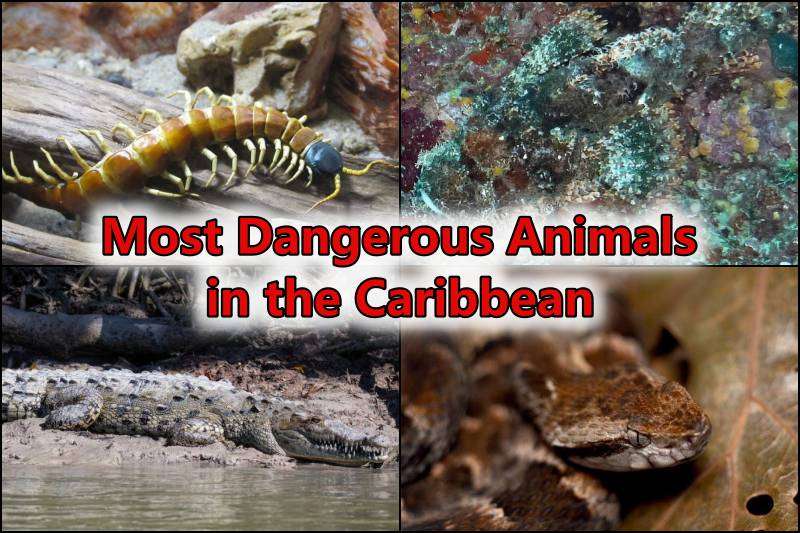Beautiful in every way, the Caribbean is a part of the world known for its beaches, clean oceans, and tropical temperature. Visitors must be warned that the Caribbean is home to a number of deadly species in addition to its stunning natural beauty. The top 10 most dangerous animals in the Caribbean will be discussed in this article, along with their habitats, habits, and number of deaths per year to humans.
Understanding these animals and their activities is essential for your safety and enjoyment while traveling through this breathtaking region of the world, whether you’re a resident or a visitor.
Top 10 Most Dangerous Animals in the Caribbean
10. Lion fish
| Scientific name | Pterois |
| Size | 18 in |
| Habitat | Warm marine water |
| Location | Indo-pacific region, Caribbean Sea and Mediterranean Sea |
| Danger level | Venomous |
| Number of death in a year | Rarely cause death |
The lionfish, a venomous marine fish native to the Indo-Pacific, is a popular aquarium fish and invasive species in the Caribbean Sea and Mediterranean Sea.
Also, lionfish, known for their colorful and beautiful appearance, can cause unintentional attacks due to their venomous toxin.
Moreover, when administered to humans, the poison can cause allergic reactions, organ failure, and damage. The venom may also cause a loss of consciousness, leading to potential predatory attacks.
9. Amazonian Giant Centipede
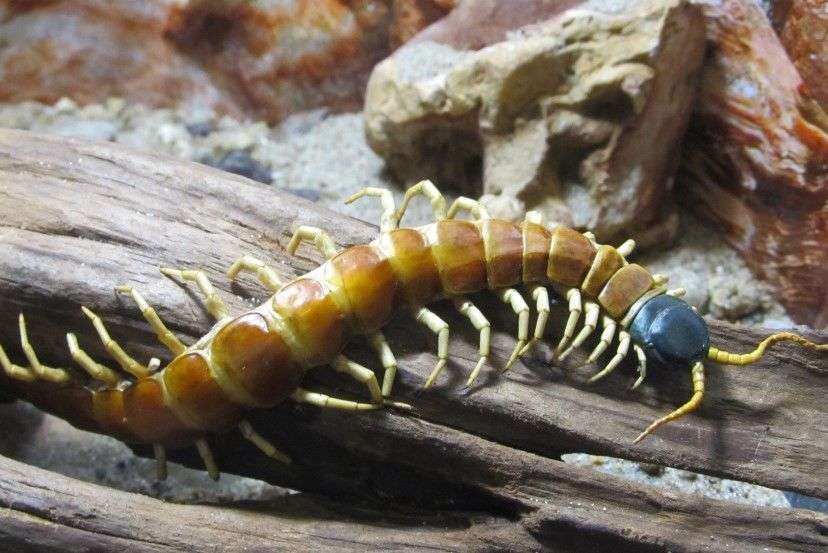
| Scientific Name | Scolopendra gigantea |
| Size | Up to 30 cm (12 in) in length |
| Habitat | Terrestrial, found in rainforests, caves, and savannahs |
| Location | Trinidad and Northern Colombia |
| Danger Level | Highly venomous and aggressive, considered dangerous to humans |
| Number of Deaths in a year | at least one human death (reported) |
The Amazonian giant centipede, Scolopendra gigantea, is one of the world’s largest at up to 30 centimeters in length.
This incredible arthropod can be found in the leaf litter, fallen logs, and under stones of the South American and Central American jungles, as well as the Caribbean.
It is a carnivore that eats anything it can overpower and kill. It has the ability to overwhelm not just giant insects, spiders, millipedes, scorpions, and even tarantulas but also small vertebrates such as lizards, frogs, sparrow-sized birds, mice, and bats.
8. Southern Black Widow
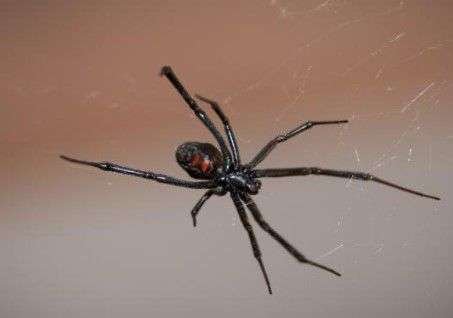
| Scientific Name | Latrodectus mactans |
| Size | Females: about 1.5 inches (38 mm); males: smaller |
| Habitat | Woodlands, fields, and other outdoor environments |
| Location | Found in the Dominican Republic |
| Danger Level | Highly venomous; potentially lethal to humans |
| Number of Deaths in a year | 4-8 (on average) |
Latrodectus mactans, also referred to as the shoe-button spider and the southern black widow, is a venomous species of spider in the genus Latrodectus.
The females are famous for their striking black and red appearance as well as the fact that occasionally they may consume their partners after mating. The venom can induce discomfort and other symptoms, although healthy persons seldom die from it.
Their Leg length in relation to the body is long. Females have an hourglass-shaped red marking on the ventral (under) side of their very rounded abdomens. They are shiny and black in appearance.
The size of females varies greatly, especially in egg-bearing (gravid) females. A female who is pregnant may have an abdomen that is larger than 1.25 cm (0.5 in) in diameter.
Moreover, the top of the abdomen of many female widows has an orange or red patch immediately above the spinnerets.
7. Cone snail
|
Scientific name |
Conidae |
|
Size |
1.3 cm to 21.6 cm |
|
Habitat |
shallow water near coral reefs |
|
Location |
Indian and Pacific Oceans, Caribbean, and Red Seas |
|
Danger level |
Venomous |
|
Number of deaths in a year |
It was rare, but in 2004, 30 cases were found in which death was caused by cone snails. |
Cone snails are commonly found in the Indian and Pacific Oceans, Caribbean, and Red Seas.
This dangerous animal in the Caribbean is not aggressive but is venomous and can be found in shallow intertidal waters.
Moreover, their shells range from less than an inch to 9 inches long, and they unwind themselves in the shell before releasing a sharp stinger.
Also, these snails hunt worms and other snails, with some species eating fish, which are the most harmful to humans.
6. Fer De Lance Snake
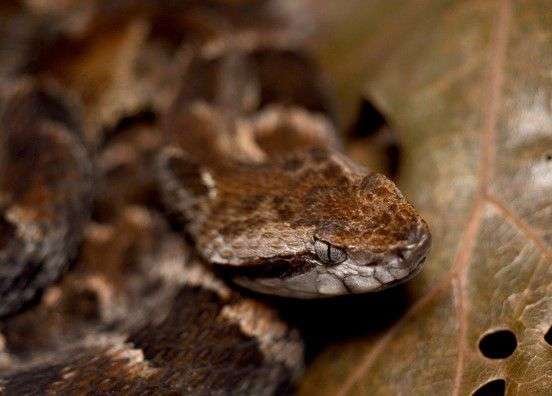
| Scientific Name | Bothrops asper |
| Size | Up to 2 meters (6.6 feet) long |
| Habitat | Tropical forests, rainforests, and lowlands |
| Location | Caribbean island of Martinique |
| Danger Level | Considered one of the most dangerous snakes in the world |
| Number of Deaths in a year | About 7 to 9 percent (people who do not receive anti-venom after they’re bitten) |
It is one of the largest pit vipers, with a maximum length of 2.5 meters (8.2 feet) and a mass of up to 6 kilograms (13 lb). Its hue ranges from pale to dark brown, and its body frequently has yellow zigzag lines on each side.
Given the moniker “the ultimate pit-viper” due to its size, venomous output, and fangs, it is feared for being the snake that bites people the most across its area due to its defensive nature and proximity to homes.
Yet like other poisonous snakes, it stays as far away from people as it can.
5. South American rattlesnake
https://in.pinterest.com/pin/9499849207763325/
|
Scientific name |
Crotalus durissus |
|
Size |
50-200 cm |
|
Habitat |
savanna, grasslands, shrubland, and semi-arid zones |
|
Location |
Caribbean islands, South America, Colombia, eastern Brazil, Peru, Bolivia, Paraguay, Uruguay, and northern Argentina |
|
Danger level |
Highly venomous |
|
Number of deaths in a year |
mortality rate of 72% without treatment and 11% with treatment |
The next on our list is the South American rattlesnake, a highly venomous pit viper species that is found in South America, Colombia, eastern Brazil, Peru, Bolivia, Paraguay, Uruguay, and northern Argentina.
They prefer savanna, grasslands, shrubland, and semi-arid zones. Also, bite symptoms are different from those in Nearctic species due to neurotoxins causing progressive paralysis, damage to skeletal muscles, and possibly damage to the heart.
Do you know that their bite can cause acute renal failure, which is the main cause of death, with a mortality rate of 72% without specific serum treatment and 11% with specific treatment?
4. Box Jellyfish
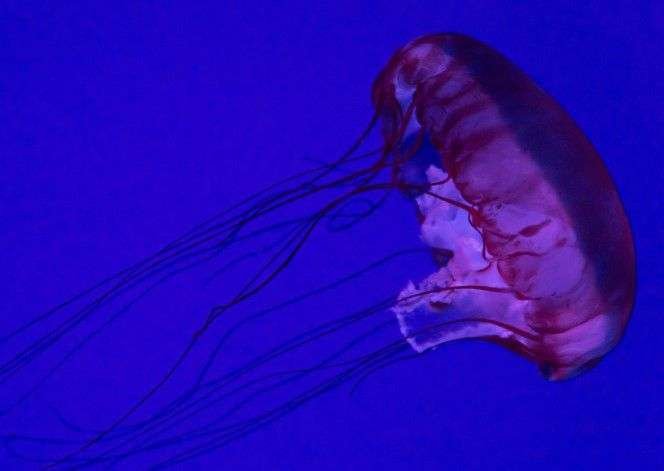
| Scientific Name | Chironex fleckeri |
| Size | Up to 30cm bell diameter |
| Habitat | Coastal waters and estuaries |
| Location | Caribbean Sea |
| Danger Level | Extremely dangerous, potentially lethal. |
| Number of Deaths in a year | 50-100 |
Cnidarian invertebrates known as box jellyfish (class Cubozoa) are identified by their box-like (or cube-shaped) bodies.
Several box jellyfish species generate powerful venom that is released upon contact with their tentacles. The bell of the box jellyfish medusa, from which it gets its name, is square and box-shaped.
A short stalk, or pedalium, with one or more long, thin, hollow tentacles hangs from each of the four lowest corners of this structure.
A velarium, or shelf formed by folding the bell’s rim inward, limits the aperture of the bell and produces a strong jet when it pulses.
Because of this, box jellyfish have been observed to swim up to 6 metres (20 feet) per minute, which is faster than other jellyfish.
3. Stone Fish
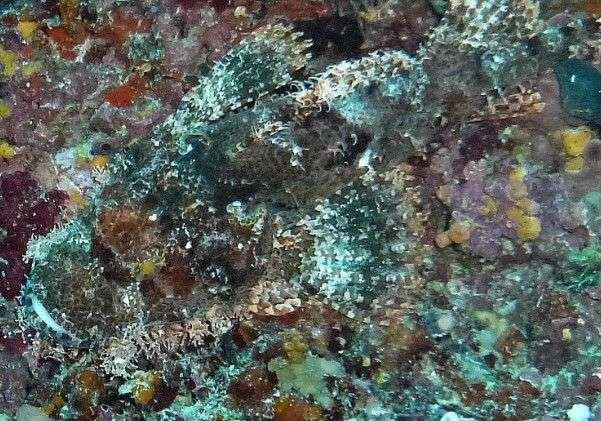
| Scientific Name | Synanceia spp. |
| Size | Up to 30 cm |
| Habitat | Coral reefs, rocky areas, and sand/mud bottoms |
| Location | Caribbean Sea, Cayman Islands, Trinidad, and Tobago |
| Danger Level | Extremely dangerous, considered one of the most venomous fish in the world |
| Number of Deaths in a year | more than 800 to 1,000 stings are reported every year, but the death rate is less. |
Stonefish are sluggish bottom-dwelling fish that inhabit mudflats, estuaries, and areas with rocks or coral.
Thickset fish with enormous heads and mouths, small eyes, bumpy skin covered in lumps that resemble warts, and occasionally fleshy flaps, sit on the bottom motionless, integrating nearly perfectly in form and color with their surroundings.
These fish are dangerous. They are difficult to see, and when trodden on, they can inject a lot of venom through grooves in the spines of their dorsal fin. This fish can cause extremely severe and even lethal wounds.
They do not aggressively hunt these creatures, but they do consume some invertebrates that live on the bottom and other reef fish. They choose to wait for food to be brought to them.
Stonefish wait for hours before striking when their potential meal is only a body length away. They can readily suck down and swallow entire their unwary prey because of the pressure that their strong jaws and huge lips provide.
2. Shark
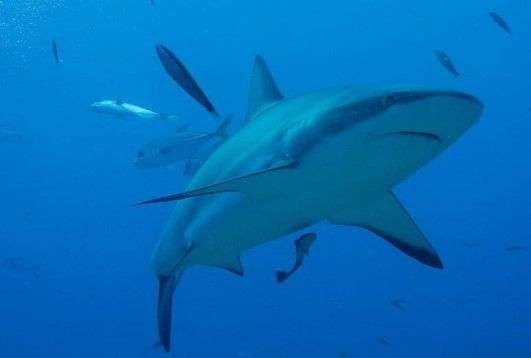
| Scientific Name | Carcharhinus leucas (Bull Shark), Galeocerdo cuvier (Tiger Shark), Carcharodon carcharias (Great White Shark) |
| Size | 7-11.5 ft (2.1-3.5 m) for the bull shark, 10-14 ft (3-4.3 m) for the tiger shark, and Up to 20 ft (6.1 m) for the great white shark |
| Habitat | Coastal and offshore waters |
| Location | Caribbean Sea |
| Danger Level | Highly dangerous |
| Number of Deaths in a year | 333 human attacks, with 52 resulting in death. |
Sharks found in the Caribbean Sea are Bull Sharks, Tiger Sharks, and Great White Sharks.
Sharks are an elasmobranch fish species distinguished by their cartilaginous skeleton, five to seven-gill slits on the sides of the skull, and unfused pectoral fins. The clade Selachimorpha (or Selachii), which includes modern sharks, is the sister group to the Batoidea (rays and kin).
According to some sources, the name “shark” refers to any extinct Chondrichthyes (cartilaginous fish) species with a shark-like shape, including hybodonts and xenacanths.
There are a number of species that are apex predators or organisms at the top of their food chain. The tiger shark, blue shark, great white shark, mako shark, thresher shark, and hammerhead shark are a few examples.
Shark teeth are continuously replaced throughout life and are implanted in the gums rather than being attached to the jaw.
Some sharks lose 30,000 or more teeth in their lifetime; replacement teeth grow in a groove on the inside of the jaw and advance continuously like a conveyor belt.
1. American Crocodile
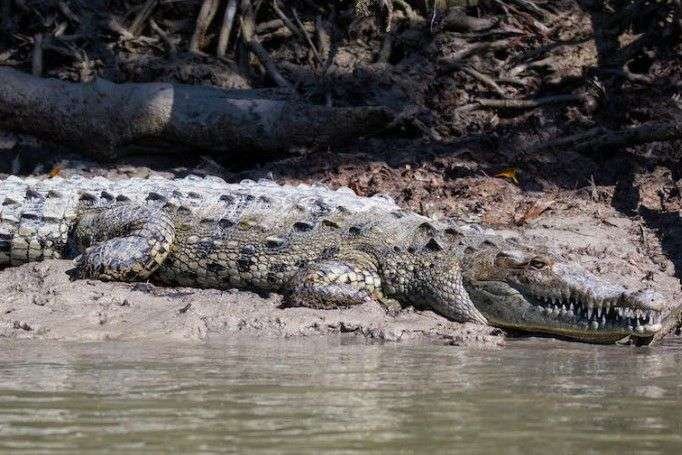
| Scientific Name | Crocodylus acutus |
| Size | Up to 16 ft (4.9 m) |
| Habitat | Freshwater and brackish water habitats, sometimes coastal areas |
| Location | Caribbean Sea, Hispaniola, Cuba, and Jamaica |
| Danger Level | They are extremely dangerous to humans |
| Number of Deaths in a year | More than 1,000 crocodile attacks a year result in death |
The American crocodile’s habitat consists primarily of coastal locations. It can also be found in river systems, but it prefers salinity, therefore, it congregates in brackish lakes, mangrove swamps, lagoons, cays, and small islands.
Other crocodiles have saltwater tolerance due to salt glands beneath the mouth, but the American crocodile is the only species other than the saltwater crocodile that can live and thrive in saltwater.
They are found on beaches and small island formations that lack a freshwater source, such as numerous cays and islets in the Caribbean.
The nostrils, eyes, and ears are on the top of its head, allowing the remainder of its body to be hidden underwater for surprise strikes. Camouflage also aids in food predation.
In conclusion, a range of deadly animals endangers people’s lives in the Caribbean. So be careful and safe.
FAQs:
1. Are there any dangerous animals in the Caribbean?
Ans. Yes, there are many dangerous animal such as American crocodile, sharks, far de lance snake, and many more.
2. What is the number one danger?
Ans. Crocodile and sharks in water, but when it come to danger these cute animal such as box jellyfish, lionfish are the number danger in caribbean.
3. What are the 3 most dangerous animals in the world?
Ans. Mosquitos, snake, and scorpions are the most dangerous animals in the world.
4. What is the most dangerous animal in the sea?
Ans. Sharks are the most dangerous animal in the sea.
5. Is it safe to swim in the Caribbean?
Ans. No, you must take care of crocodiles, box jellyfish, sharks and many more animal.
Are all Caribbean islands safe?
Ans. No, not whole Caribbean but some regions are safe.
References:
- Wikipedia
- Sciencefocus.com
- Britannica.com
- A-Z animals
Also Read:

As a content writer, I like to write about different niches. I have a curiosity about nature and animals. And like to learn about them. Through my writing, I like to share my experience and knowledge with you. I hope you are enjoying it too.
